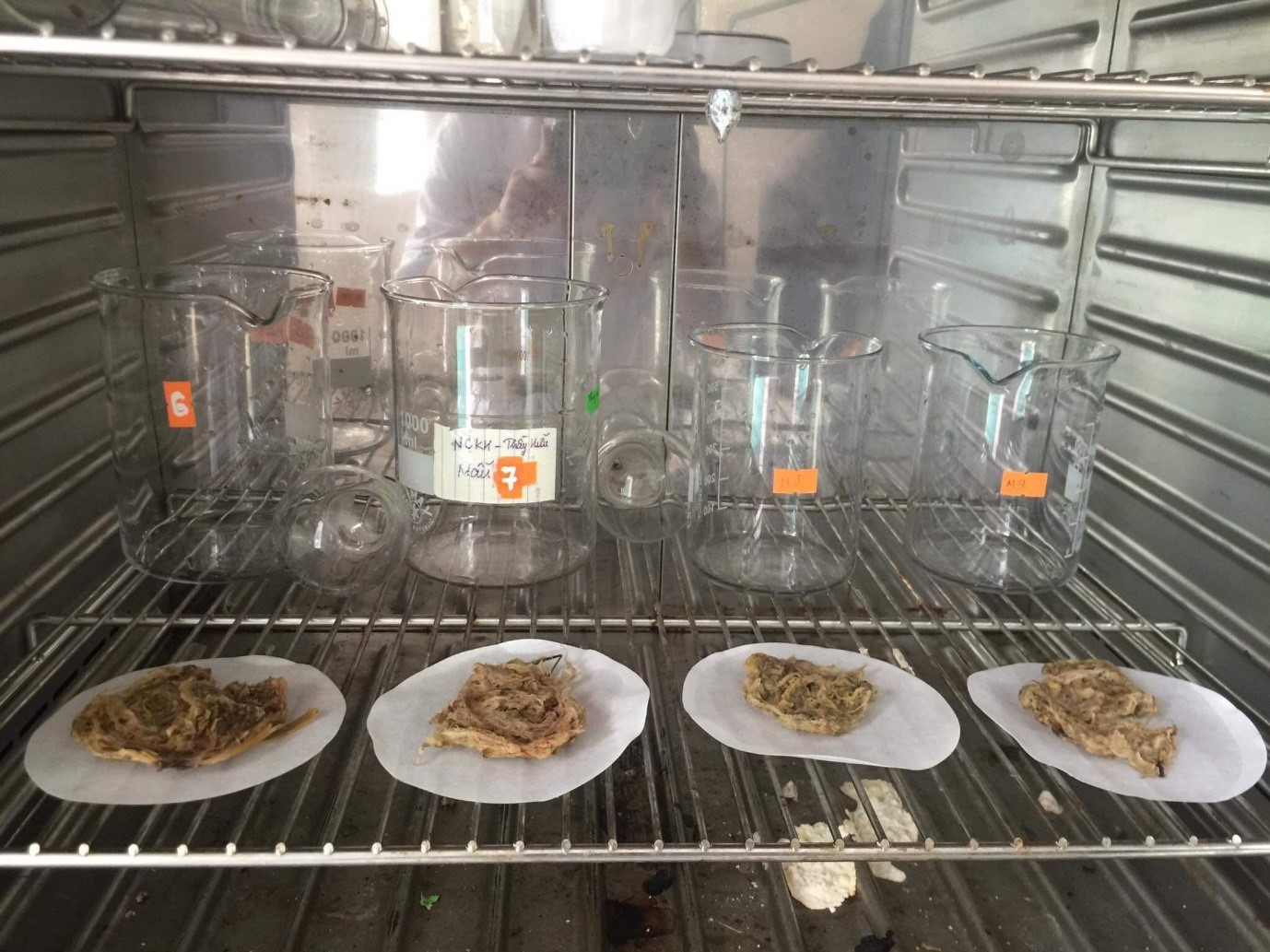Research on cellulose denatured from straw to adsorbate gasoline in water
With the aim of denaturing the byproduct from straws to collect oil and oil slick on water face, the group of 5 students from Faculty of Chemical Engineering successfully carried out the subject “Research on Cellulose denatured from straw to adsorbate gasoline in water”. The subject was awarded the First Prize of Student Science Researching Contest 2021 of Hanoi University of Industry.
Vu Trong Hoat, fourth-year student, head of the research group said that the chance of selecting this subject came from one time he heard the lecturer mention it. All of the group was surprised about the environment clearing function of this material.
Hoat wanted to improve and create a material that can purify water affected by gasoline and with his 4 schoolmates Nguyen Van An, To Dang Hung, Tran Duc Phu, and Nguyen Thi Thu Trang, the group studied Cellulose denatured from straw to adsorbate gasoline in water. They were guided and supported by Assoc.Prof.Dr. Nguyen The Huu - Vice Dean of Faculty of Chemical Engineering.
 The research group collecting straws for the experiment process
The research group collecting straws for the experiment process
The main components of straw are Cellulose and Lignin; Cellulose contains many OH groups, making it easy to adsorbate via Hydro connection. The Hydro connections in Cellulose fiber are extremely strong and form a system of solid and persistent networks, this helps Cellulose fiber not dissolve in water and almost normal organic solvents.
The process of separating Cellulose from straw
The group prepared NaOH solution (with different molar concentrations) in 500ml of distilled water, stir continuously until completely dissolved. Then accurately (to the milligram) take 10g±0,1g of straw into NaOH solution and put in the lab oven at 50 – 600 C in 24 hours, let the mixture cool down then use the funnel to separate the straw, wash with water until NaOH expires (test with Phenolphthalein until it shows no more pink). Dry Cellulose at 900C until the weight is unchanged.
 Cellulose samples after dried
Cellulose samples after dried
After that, the group separate Lignin from straw to collect Cellulose in fiber by taking an experiment in 4 straw samples with a similar weight and different molar concentration of NaOH in 500 ml of distilled water. Finally, assess the result by appearance method.
The process of synthesizing ferromagnetic on Cellulose
After separating Lignin and collecting Cellulose from straw, come to the process of synthesizing ferromagnetic on Cellulose.

The process of synthesizing ferromagnetic on Cellulose
The adsorbent was synthesized following the above chart by slowly adding NaOH to FECl3 with a similar molar concentration. After that, use HCl solution 0,02M to adjust the pH to 6,5 – 7.
Investigate the adsorbate speed of the material with A95 gasoline
The group investigated over 4 samples, each weighted 1g, Vn = 10ml, Vx = 2ml.
They observed the adsorbate speed of the samples in various time marks: 10 minutes, 20 minutes, 30 minutes, 40 minutes and 50 minutes.
The result showed sample T3 reached the maximum adsorbate threshold in nearly 30 minutes. From 20 to 30 minutes, the adsorbate happens fastest. From 30 to 50 minutes, the process continues to happen but it is significantly slow, the gasoline adsorbed is trivial.
 Sample T3 reached maximum adsorbate threshold in nearly 30 minutes
Sample T3 reached maximum adsorbate threshold in nearly 30 minutes
The result
After researching the subject “Cellulose denatured from straw to adsorbate gasoline in water”, the group come out with satisfactory results:
- Calculated that the optimum molar concentration of NaOH for the experiment of separating cellulose from straw is 2M. The Cellulose collected from straw was over 33,33%.
- Successfully synthesize adsorbent from denatured Cellulose with the dispersion of ferromagnetic on Cellulose most suitable with?
- The adsorbate ability of the material to A95 gasoline is up to 95% over the total weight of the gasoline after about 30 minutes, at 280C.
- After reproducing the adsorbent, the adsorbate efficiency can reach 95 to 97% of the maximum efficiency.
Especially, this research is high-applicability and high economically because it solves both of the two problems in agriculture and industry. In industry: overcome the bad result of oil leak in sea and river. In agriculture: settle the abundant straw after crop. Besides, it resolves another environmental problem: stop the habit of burning the straw.
